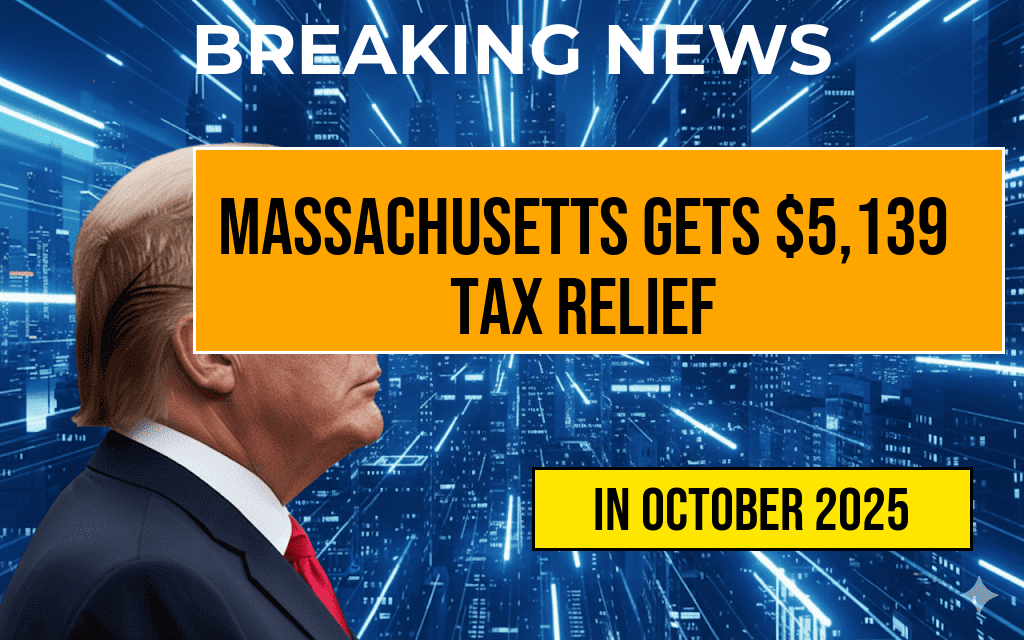Massachusetts residents are receiving an average of $5,139 in tax relief as a result of the recent implementation of the Trump-era tax plan. The measure, which took effect earlier this year, aimed to provide targeted financial benefits to individuals and families across the state, reflecting broader national efforts to reshape federal tax policies. According to preliminary data from the Massachusetts Department of Revenue, millions of residents have seen their tax bills decrease significantly, with many reporting extra funds that could be redirected toward savings, debt reduction, or essential expenses. This relief comes amid ongoing debates about the long-term impacts of the tax changes, but the immediate effect is clear: a substantial boost to household finances for thousands of residents.
Impact of the Tax Plan on Massachusetts Households
The recent tax adjustments have led to notable reductions in tax liabilities for residents across Massachusetts. The average relief amount of $5,139 highlights a meaningful shift in the state’s tax burden, particularly benefiting middle-income families. The plan’s design emphasizes lowering individual rates and expanding certain deductions, which collectively contribute to the overall savings.
Key Factors Contributing to Tax Savings
- Lower marginal rates: The tax plan reduced the top income tax rate from 39.6% to 37%, resulting in immediate savings for higher earners.
- Increased standard deduction: The standard deduction nearly doubled, decreasing taxable income for many filers.
- Child and family credits: Expanded credits have provided additional relief for families with children, further lowering tax bills.
- Elimination of certain deductions: Some itemized deductions were limited or removed, prompting taxpayers to adjust their filings.
Regional Variations and Demographic Impact
The relief amounts vary across different regions within Massachusetts, with urban centers like Boston experiencing slightly higher average savings due to higher income levels. Conversely, rural areas see more modest reductions, though the overall trend remains positive. Households earning between $50,000 and $100,000 tend to benefit most, aligning with the plan’s focus on middle-income taxpayers.
| Income Bracket | Average Relief | Percentage of Taxpayers in Bracket |
|---|---|---|
| $25,000 – $50,000 | $3,200 | 35% |
| $50,000 – $100,000 | $5,139 | 40% |
| $100,000+ | $7,200 | 25% |
Economic and Political Reactions
State officials and economic analysts have largely welcomed the tax relief figures as a positive sign of financial stability for many residents. Governor Maura Healey stated that the relief helps families cope with rising living costs and supports local economic growth. Meanwhile, some critics argue that the benefits are unevenly distributed and that the plan’s long-term fiscal sustainability remains uncertain. The debate continues over whether such tax cuts stimulate economic activity or primarily benefit higher-income groups.
Official Statements and Data Sources
According to the Massachusetts Department of Revenue, the majority of taxpayers experienced a reduction in their tax liability, with many seeing substantial refunds. The findings align with national analyses, such as those reported by Forbes, which highlight the broader implications of the federal tax reforms.
Looking Ahead: Potential Policy Changes
While the current relief provides immediate financial benefits, policymakers are already discussing future adjustments. Some legislators advocate for expanding tax credits further to assist lower-income households, while others emphasize the importance of balancing tax cuts with funding for public services. As federal and state policies evolve, residents can expect ongoing changes that may influence their tax liabilities in the coming years.
Frequently Asked Questions
What is the total amount of tax relief received by Massachusetts residents under the Trump tax plan?
Massachusetts residents received a total of $5,139 in tax relief under the Trump tax plan.
How does the Trump tax plan benefit Massachusetts residents?
The plan provides significant tax relief to residents, reducing their overall tax burden and increasing their disposable income.
Which factors contributed to the tax relief amount for Massachusetts?
The tax relief amount is influenced by factors such as income levels, filing status, and changes in tax policies introduced under the Trump administration.
Does the tax relief vary across different income groups in Massachusetts?
Yes, tax relief amounts vary among income groups, with higher-income residents generally benefiting more from the tax cuts implemented under the plan.
When did Massachusetts residents start seeing the tax relief benefits?
Massachusetts residents began seeing the tax relief benefits following the implementation of the Trump tax plan, with many noticing the changes during the tax filing season.







